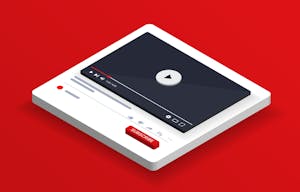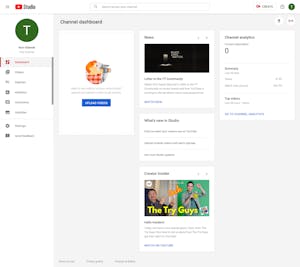- 8 minute read
- Industry Insights
- Social Media
All Skill Levels
Get a behind-the-scenes-look into FareHarbor's 2024 season

Your YouTube channel is an opportunity to show viewers what your company is all about. With so many channels on the platform, it’s important to stand out and attract more viewers who could turn into customers.
Once you’ve set up your channel and have started experimenting with video, take it to the next level by using YouTube Studio to customize your channel and measure performance.
YouTube Studio is a toolset built into the platform that gives you useful insights into your channel’s traffic, audience engagement, views, comments, and so much more. The built-in tools help you better leverage your channel, keep track of important video metrics, and gain new subscribers.

Thanks to a recent update to YouTube Studio, creators can now customize the layout, branding, and other aspects of their channels. Originally, customization options were limited to channel headers, icons, and video thumbnails. This update offers the chance to better organize your channel to reflect the creative style of your business. YouTube is also taking a mobile-first approach to make channel sections visually consistent on both desktop and mobile.
Let’s take a look at the various elements within YouTube Studio and how you can measure the success of your channel using these tools.
 Dashboard
DashboardThe dashboard gives you an overview of recent channel performance. You’ll see information on your latest video, including the number of views, average view duration, watch time, and more. You can also see recent subscribers (within the past 28 days), a news section with industry updates, and a section on what’s new in Studio.
 Analytics
AnalyticsThe Analytics section shows you how many views your channel has received in the past 28 days, watch time by hours, traffic source, geography, viewer age, and more. Digging into this data shows you where your viewers are located, how old they are, their gender, when they viewed the video, and other important information that you can use to better engage with your audience.
 Customization
CustomizationThe Customization tab allows you to tailor what your YouTube channel homepage looks like. In the Layout section, you can set your channel trailer (read more about this in our guide to getting started with YouTube) as well as a featured video for returning subscribers. This allows you to customize the experience for viewers who land on your channel homepage, giving you a better chance of capturing their interest.
The Branding section is where you set your banner image, video watermark, and profile picture to help reinforce your company’s brand identity. Be intentional about your branding elements on your YouTube page to make sure you’re communicating to your viewers and subscribers what type of experience they can expect from you.
 Videos & Comments
Videos & CommentsThe Videos section gives you a quick overview of each video, including when you uploaded it, the number of views, comments, likes vs. dislikes, visibility, and restrictions. The Comments section groups the comments from all videos into one place so you can see which are likely spam, which are being held for review, and which you still need to respond to.
If you’re just starting out with YouTube and trying to build channel engagement, pay attention to the data from Studio to see where you can improve. We recommend checking in at least once a week and after publishing any new videos to see how they’re performing.
The most successful YouTube channels are those that are consistent and intentional. Follow these tips to optimize your channel and ensure that it’s helping you meet your marketing goals.

To grow your YouTube channel, you need to keep making videos with your target audience in mind and focus on the analytics to see what works best for your brand. There’s no right or wrong way to make a video, so keep experimenting to determine what resonates with your audience.
Follow the steps in our YouTube Optimization Checklist to make sure each and every video you post meets important guidelines like description length, target keywords, thumbnails, and more.